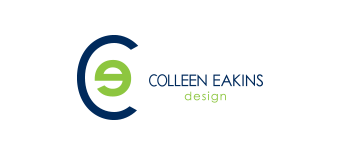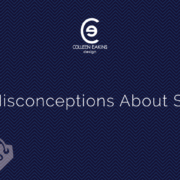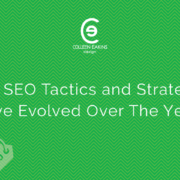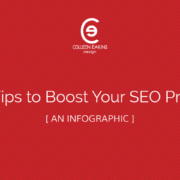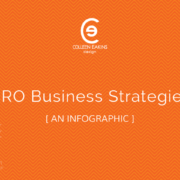5 Misconceptions About SEO
It’s hard to find a subject that’s as controversial as “SEO,” even though it seems like Search Engine Optimization should be a reasonable one to discuss. After all, the discipline is partly a science. Certainly, there must be universal issues that everyone can agree about, right? The reality is, very few consensus agreements ever exist about how to implement SEO practices correctly.
#1. Content Is King
For years, the very existence of top web content was thought to be the primary driver of search engine traffic. If your site had copious amounts of “high-quality content” you would miraculously rank for every keyword around. This perception changed when Google began to focus on many other factors in their calculations. They have no true way to determine how well-written a piece is, or how much research went into creating it. They can only guess when they look at a range of signals.
In the last few years, pieces of content that are popular tend to rank well in search. These articles or videos tend to go viral on the popular social networks, and the search engines take notice. Video quality is highly subjective, so it’s safe to say that the content may not appeal to everyone. It may not even earn the high-quality distinction. However, it’s popularity tells the search engines that people engage with the content and they rank it based on its usefulness.
#2. The More Backlinks the Better
For a long time, online marketers built as many links to their websites as they could muster. They would buy, rent, or create them everywhere they went online. The strategy was excellent in its effectiveness, and the backlink rental business boomed. However, Google quickly caught on to the tricks and began to take a closer look at links. They started to penalize site owners for links to their sites and from their sites and backlinks turn extremely dangerous instead of beneficial! The change in perception of the efficacy of these linking tactics transformed the game overnight. Suddenly people who spend their days optimizing for SEO had to take a whole new approach to their day to day business.
Now the jobs for search engine optimizers are more involved. There are no longer any quick fixes to create surges of traffic. In fact, the websites that gorged on too many links have all but disappeared from the SERPS. A new generation of authority sites now rule most keyword categories these days. They rank because they are useful and used by a wide swath of the population. These websites tend to follow the pattern of “the rich get richer” while it’s much tougher for new sites to establish themselves as leading authorities.
#3. SEO Is a Primary Driver of Business
Companies that rely on search engine traffic face a tough road. They suffer whenever a change in ranking happens. This uncertainty makes it difficult to forecast their sales, which is a big problem for a fast-growing firm. Many businesses now use PPC and other forms of paid ads to smooth out the rough edges. SEO still drives quality traffic to a website, but most companies want a well-balanced mix of marketing tactics to ensure their strategy stays afloat.
SEO will continue to be a concern for most businesses who compete online, but many of them have shifted budgets to other areas like digital marketing, mobile apps, and email marketing.
#4. Keywords Rule
Keywords were once the “big thing” in SEO. That statement is not as true as it once was. For the most part, Google and other engines don’t place the emphasis they once did on keywords. That means website authors have become less mechanical in their work. There’s no point in stuffing keywords just to face a stiff penalty from Google. Now, most content producers spend their time writing competent articles that rely heavily on research.
Keyword research is still an important discipline, but it’s not the sole driving force behind why a firm produces content. Once a writer finishes that initial research, it’s crucial to create content that covers a subject well.
#5. Site Owners Can Safely Ignore Technical Issues
Too many webmasters and site owners think they can get away with ignoring technological aspects of managing web content. Nothing could be further from the truth. Any problems that prevent usability or indexing can cost dearly. Websites need to function properly and operate fast. The average web user won’t stick around for mistakes, and search engines downgrade any website that malfunctions.
It’s crucial that the site owners ensure all website basics work from the beginning. The site structure, the type of architecture and the infrastructure all determine performance. Top search engine optimizers guarantee all the elements are in place for a website before they attempt to boost rankings. Google has always loved state of the art websites, so many companies pay a lot to ensure they are running in modern datacenters. However, you can’t just pay your way to the top. One of the most important elements to maintaining a top performing site is constant monitoring. Optimization is an ongoing process of tweaks.
If you’re in it for the long-term, SEO is a rewarding endeavor. There’s no reason to ignore the benefits of gaining organic traffic. However, you have to maintain a wide-angle view of many other moving parts at the same time. In the “old days,” it would pay to focus on search engines only. They were paramount to all your efforts. These days, the wider the approach you take, the better. There are many useful apps and websites to work. You do not have to focus on your site only. You may as well represent your business across the full spectrum of social networks to ensure the widest possible audience. SEO is still a potent weapon, what’s different now is how to wield it! Now’s an ideal time to speak to an SEO expert who can guide you through the process. If you want the benefits of search engine optimization, a professional is always a good idea.

I’m a Digital Marketer & Freelance Writer with a penchant for all things forward-thinking and positive. I’m a fan of abundance and progress.

